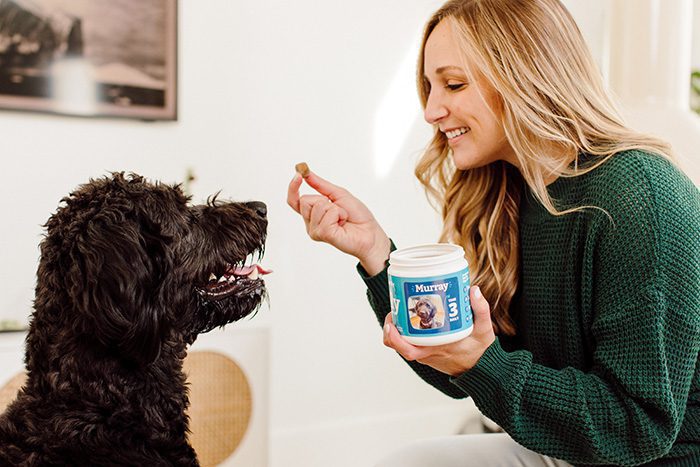Ever wondered what causes those sneezing fits around your furry friend? Pet allergies are a common issue, impacting about 10-20% of people worldwide with symptoms like itchy eyes, runny noses, or even breathing difficulties.
Whether you’re dreaming of adding a pet to your home or already living with one, understanding the causes and symptoms is crucial to avoid discomfort and enjoy their companionship.
From hypoallergenic breeds like poodles and Siamese cats to fur-free options like fish, there are ways to manage pet allergies and still share your life with a pet.
These allergies aren’t just a nuisance—they can make pet ownership challenging, especially if you’re allergic but love animals.
Knowing your options now can help you breathe easy, whether you’re considering adoption or seeking relief at home, ensuring a happier, healthier relationship with your pets.
Unexpected Detail
You might not expect that even homes without pets can have pet allergens, as they can linger for over a year or be carried on clothing, affecting allergy sufferers in unexpected places.
Understanding Pet Allergies: Core Concepts

The foundation of pet allergies lies in the complex interplay between our immune system and seemingly harmless proteins found in animals.
To truly understand why some people experience allergic reactions to pets while others don’t, we need to explore the intricate mechanisms at work within our bodies.
The Immune System’s Response to Pet Allergens
When we talk about pet allergies, we’re discussing an overreaction of our immune system. Think of your immune system as an overzealous security guard who mistakes innocent proteins from pets as dangerous invaders.
These proteins, called allergens, are typically harmless substances that don’t cause problems for most people.
In individuals with pet allergies, the immune system produces specific antibodies called Immunoglobulin E (IgE) in response to these pet proteins.
These antibodies trigger the release of chemicals like histamine, which causes the familiar symptoms of allergic reactions.
The Source of Pet Allergens
Contrary to popular belief, pet hair itself isn’t an allergen. Instead, the real culprits are proteins found in:
- Pet saliva
- Pet urine
- Pet dander (dead skin cells)
- Skin oil glands
In cats, the primary allergen is a protein called Fel d 1, which is mainly produced in their saliva and skin glands.
Dogs produce several allergenic proteins, with Can f 1 being the most prominent. These proteins are incredibly small and lightweight, allowing them to remain airborne for hours and stick to surfaces throughout your home.
Breaking Down Common Misconceptions
Many misconceptions surround pet allergies, leading to confusion and potentially ineffective management strategies. Understanding what’s true and false about pet allergies is crucial for effective treatment.
Some key misconceptions to address:
- “Short-haired pets cause fewer allergies”: The length of an animal’s fur doesn’t determine its allergenicity. Even hairless cats can trigger allergic reactions because they still produce allergenic proteins.
- “You’re either allergic or you’re not”: Allergic reactions exist on a spectrum, and sensitivity can vary significantly from person to person and even change over time.
- “You can’t develop pet allergies as an adult.”: Allergies can develop at any age, even after years of living comfortably with pets.
Types of Allergic Reactions
Pet allergies can manifest in several ways, ranging from mild to severe. Understanding these different types of reactions helps in proper diagnosis and management:
Immediate Reactions
These occur within minutes of exposure and typically include:
- Sneezing and runny nose
- Itchy, watery eyes
- Facial pressure and congestion
- Skin rashes or hives
Delayed Reactions
Some individuals experience delayed reactions, which can develop hours after exposure:
- Congestion that worsens over time
- Persistent coughing
- Difficulty breathing
- Skin reactions that appear gradually
Severe Reactions
In some cases, particularly in individuals with asthma, pet allergies can trigger more serious responses:
- Chest tightness
- Wheezing
- Difficulty breathing
- Asthma attacks
Recent research published in the Journal of Allergy and Clinical Immunology suggests that exposure patterns can significantly influence reaction types.
“The body’s response to allergens isn’t just about the presence of proteins. It’s also about the duration and intensity of exposure, combined with individual susceptibility factors.”
Understanding these core concepts about pet allergies provides the foundation for effective management strategies and informed decisions about pet ownership.
Whether you’re seeking solutions for existing allergies or considering bringing a pet into your home, this knowledge forms the basis for all further discussions about prevention, treatment, and living successfully with pet allergies.

Recognizing Pet Allergy Symptoms
Understanding the diverse ways pet allergies manifest can be crucial for proper diagnosis and treatment.
While some symptoms appear immediately upon contact with an animal, others might develop gradually, making them harder to connect with pet exposure.
Let’s explore how to identify these varying reactions and determine when they warrant medical attention.
Understanding Immediate Allergic Responses
When you experience immediate allergic reactions to pets, your body launches a rapid immune response within minutes of exposure.
These reactions typically affect the respiratory system and eyes first. Many people report sneezing fits beginning within 15 minutes of entering a home with pets, even if they haven’t directly interacted with the animal.
Common immediate symptoms include:
- Persistent sneezing episodes
- Itchy, watery eyes that may become red and swollen
- A runny or stuffy nose
- Facial pressure and pain
- Itching of the nose, roof of the mouth, or throat
- Skin reactions such as hives or redness where a pet has touched you
Delayed Reaction Patterns: The Silent Progression
Delayed allergic responses can be more challenging to identify because they develop hours after exposure.
“Delayed reactions often build up gradually, sometimes taking 8-12 hours to reach their peak intensity.” This delay can make it difficult for sufferers to connect their symptoms with pet exposure.
Typical delayed symptoms often include:
- Gradually worsening nasal congestion
- A persistent cough that develops hours after exposure
- Fatigue and general malaise
- Skin reactions that appear several hours after contact
- Difficulty sleeping due to congestion or coughing
Distinguishing Pet Allergies from Other Allergic Reactions
Pet allergies share some symptoms with other allergic conditions, but certain characteristics set them apart. Understanding these differences can help you identify the true source of your allergic reactions.
Key Differentiating Factors:
Pet allergies often:
- Worsen in spaces where pets spend time, even if the pet isn’t present
- Improve significantly when you’re away from pet environments for several days
- Cause symptoms that persist longer than typical seasonal allergies
- It may trigger asthma symptoms in susceptible individuals
The Severity Spectrum: From Mild to Severe
Pet allergy symptoms exist on a continuum of severity.” Severity often correlates with both sensitivity level and exposure duration, but can vary significantly between individuals”
Mild Symptoms
These are uncomfortable but manageable:
- Occasional sneezing
- Minor nasal congestion
- Slight itching
- Mild skin reactions
Moderate Symptoms
These impact daily activities:
- Frequent sneezing episodes
- Persistent congestion
- Continuous itching
- Difficulty sleeping
- Fatigue during the day
Severe Symptoms
These require immediate attention:
- Difficulty breathing
- Chest tightness
- Wheezing
- Severe asthma attacks
- Widespread hives or severe skin reactions
When to Seek Medical Attention
Recognizing when to consult a healthcare provider is crucial for managing pet allergies effectively. According to the American Academy of Allergy, Asthma & Immunology, you should seek medical attention if:
- Your symptoms significantly impact your daily activities or sleep
- Over-the-counter medications don’t provide adequate relief
- You experience breathing difficulties or chest tightness
- Your symptoms persist for more than two weeks
- You develop frequent sinus infections or ear infections
- You have asthma that worsens around pets
Emergency Situations
Some symptoms require immediate emergency care. Seek immediate medical attention if you experience:
- Severe difficulty breathing
- Throat tightness
- Dizziness or fainting
- Rapid pulse
- Severe chest tightness or pain
Understanding and recognizing these symptoms helps ensure proper management of pet allergies and appropriate medical intervention when necessary.
If you suspect you have pet allergies, keeping a symptom diary can help your healthcare provider make an accurate diagnosis and develop an effective treatment plan.

The Science of Pet Allergens
Pet allergens represent a fascinating intersection of biology and chemistry, where microscopic proteins can trigger significant immune responses in sensitive individuals.
Let’s explore the complex world of these allergens and understand how they affect our indoor environments.
The Molecular Nature of Pet Allergens
At their core, pet allergens are specific proteins that animals naturally produce. Think of these proteins as tiny molecular signatures unique to each species.
In cats, the primary troublemaker is a protein called Fel d 1, which weighs just 38 kilodaltons – so small that millions could fit on a grain of sand. Dogs produce several allergenic proteins, with Can f 1 being the most well-known.
Recent research from the Journal of Allergy and Clinical Immunology reveals that these proteins serve important biological functions for the animals themselves.
For instance, Fel d 1 helps maintain cats’ skin health and fur protection. This explains why we can’t simply eliminate these proteins from pets – they’re essential for the animals’ well-being.
How Different Animals Produce Allergens
Different pets produce allergens in unique ways, affecting how these proteins spread through our environments:
Cats secrete Fel d 1 primarily through their sebaceous glands, which explains why they’re often considered more allergenic than dogs.
These glands, located all over their skin, continuously produce the protein, which then spreads to their fur during grooming.
A groundbreaking 2023 study from the University of Michigan discovered that male cats typically produce up to five times more Fel d 1 than females.
Dogs produce their allergens mainly through saliva and skin cells. Can f 1 and related proteins are found in their saliva, which spreads to their fur during grooming.
Additionally, these proteins appear in their dander – the microscopic skin flakes that naturally shed throughout the day.
The Journey of Allergens Through Indoor Spaces
Understanding how allergens move through our homes helps explain why they’re so challenging to avoid.”Pet allergens behave almost like invisible dust that can float through the air and settle on surfaces throughout your home.”
These proteins demonstrate remarkable mobility because of their physical properties:
- They’re extremely lightweight, allowing them to become and remain airborne
- Their small size (typically 2-10 microns) helps them easily penetrate deep into fabrics
- They can attach to other particles in the air, increasing their spread
- They can remain suspended in still air for hours
Factors Influencing Allergen Levels
Several environmental and behavioral factors affect allergen concentrations in indoor spaces:
Temperature and Humidity
Research published in Environmental Science & Technology demonstrates that higher humidity levels can increase allergen persistence. The ideal conditions for reducing allergen survival are:
- Relative humidity below 50%
- Regular air circulation
- Consistent temperature control
Pet Behavior and Grooming
A 2024 study in the Journal of Indoor Air Quality found that certain pet behaviors significantly impact allergen levels:
- Frequent self-grooming increases allergen distribution
- Access to multiple rooms spreads allergens throughout the home
- Time spent on furniture creates allergen reservoirs
Environmental Persistence: Why Pet Allergens Linger
Perhaps the most challenging aspect of pet allergens is their remarkable persistence in indoor environments.
According to research from the National Institute of Environmental Health Sciences, pet allergens can remain active in indoor environments for months after a pet has left the space.
This persistence occurs because:
- The proteins are extremely stable molecules
- They bind effectively to fabric fibers and carpet
- They can become trapped in household dust
- They resist many common cleaning methods
A recent study tracked allergen levels in homes after pet removal and found:
- Detectable allergen levels remained for up to 6 months on the carpet
- Hard surfaces showed measurable levels for 4-6 weeks
- Upholstered furniture retained allergens for up to 4 months
- Air samples showed declining but present levels for several weeks
Understanding the science behind pet allergens helps explain why managing pet allergies requires a comprehensive approach.
This knowledge forms the foundation for developing effective environmental control strategies and treatment plans, which we’ll explore in later sections.
Managing Pet Allergies Through Prevention
Living with pet allergies doesn’t mean you must give up your beloved pets. By implementing strategic environmental controls and maintaining proper cleaning routines, you can significantly reduce allergen exposure and create a more comfortable living space.
Let’s explore evidence-based methods for managing pet allergies through preventive measures.
Understanding Environmental Control Principles
Environmental control begins with recognizing that pet allergens accumulate over time and can persist in your home long after cleaning.
The goal is to both reduce existing allergen levels and prevent new accumulation. “Successful allergen management requires a systematic approach that addresses both airborne and settled allergens.”
Recent studies have shown that a comprehensive environmental control strategy can reduce pet allergen exposure by up to 85%. This reduction often leads to a significant improvement in allergy symptoms and quality of life.
Creating an Effective Air Purification System
Clean air represents your first line of defense against pet allergens. Research published in the Journal of Environmental Health demonstrates that proper air filtration can remove up to 99% of airborne pet allergens.
Choosing and Placing Air Purifiers
The effectiveness of air purification depends on several key factors:
Start by selecting the right type of air purifier. High-efficiency particulate Air (HEPA) filters have proven most effective, capturing particles as small as 0.3 microns – well within the size range of pet allergens. Place air purifiers strategically throughout your home, focusing on:
- Bedrooms (where you spend 6-8 hours daily)
- Living rooms (high-traffic areas)
- Areas where your pet spends the most time
- Rooms with carpet or upholstered furniture
Research indicates that running air purifiers continuously at lower speeds proves more effective than intermittent use at high speeds.
Implementing Professional Cleaning Techniques
Proper cleaning techniques play a crucial role in allergen reduction. A study in the American Journal of Respiratory Care found that combining specific cleaning methods can reduce settled pet allergens by up to 95%.
Daily Cleaning Routine
Develop a systematic approach to cleaning that includes:
Regular Vacuuming: Use a vacuum with a HEPA filter and focus on:
- High-traffic areas (vacuum daily)
- Under furniture (twice weekly)
- Along baseboards (weekly)
- Upholstered furniture (twice weekly)
Surface Cleaning: Employ damp cleaning methods as they trap allergens rather than dispersing them:
- Use microfiber cloths for dusting
- Mop hard floors with specialized allergen-reducing solutions
- Wipe down walls periodically, especially in pet-favored areas
Deep Cleaning Schedule
Implement a regular deep cleaning schedule focusing on:
Quarterly Professional Cleaning:
- Steam-cleaning carpets and upholstery
- Clean air ducts and replace HVAC filters
- Wash curtains and drapes
- Deep-clean mattresses and box springs
Establishing Allergen-Free Zones
Creating designated allergen-free spaces provides essential refuges for allergy sufferers. Research from the Environmental Health Journal shows that maintaining even one allergen-free room can significantly improve allergy symptoms and sleep quality.
Bedroom Protection Strategies
The bedroom deserves special attention as it’s where you spend approximately one-third of your life. To create an effective allergen-free bedroom:
- Install high-quality air purifiers
- Use allergen-proof covers on mattresses and pillows
- Keep the door closed at all times
- Consider installing hardwood or tile flooring
- Wash bedding weekly in hot water (130°F or higher)
Maintaining Pet-Free Spaces
While establishing completely pet-free zones might seem challenging, research shows it’s crucial for managing severe allergies:
- Set clear boundaries for pet access
- Use physical barriers like baby gates when necessary
- Install automatic door closers in designated rooms
- Consider airlock systems for highly sensitive areas
Creating an Allergen Reduction Strategy
A comprehensive allergen reduction strategy combines multiple approaches:
Immediate Actions
- Install HEPA air purifiers in key rooms
- Replace standard HVAC filters with MERV-13 or higher-rated filters
- Remove carpet from bedrooms if possible
- Establishing cleaning routines and schedules
Long-term Solutions
- Consider gradual home modifications
- Implement regular maintenance schedules
- Monitor and adjust strategies based on symptom improvement
- Keep detailed records of cleaning effectiveness
By implementing these preventive measures systematically, you can create a living environment that minimizes allergen exposure while maintaining a happy home for both you and your pets.
Remember that consistency in maintaining these practices is key to their effectiveness.

Treatment Options for Pet Allergies
Pet allergies can significantly impact your quality of life, but there are various treatment options available to manage symptoms effectively.
This section covers medical interventions, including over-the-counter treatments, prescription medications, immunotherapy options, and emerging treatments and research.
Over-the-Counter Treatments
Over-the-counter (OTC) medications are often the first line of defense against pet allergies. These include:
- Antihistamines: OTC antihistamines like fexofenadine (Allegra Allergy), loratadine (Claritin, Alavert), and cetirizine (Zyrtec Allergy) can help relieve itching, sneezing, and runny nose.
- Nasal Sprays: Saline nasal sprays can help rinse allergens out of your nose and reduce mucus.
- Eye Drops: Antihistamine eye drops can alleviate itchy and watery eyes.
Prescription Medications
For more severe or persistent symptoms, prescription medications may be necessary:
- Prescription Antihistamines: Nasal sprays such as azelastine (Astelin, Astepro) and olopatadine (Patanase) are effective for nasal allergy symptoms.
- Steroid Nasal Sprays: These are often prescribed for more severe nasal symptoms.
- Bronchodilators: These can help relieve asthma symptoms triggered by pet allergies.
Immunotherapy Options
Immunotherapy, also known as allergy shots, is a long-term treatment that can help desensitize your immune system to pet allergens:
- Allergen-Specific Immunotherapy (ASIT): This involves regular injections of small amounts of the allergen, gradually increasing the dose over time. ASIT is effective and safe for reducing the clinical signs of atopic dermatitis in dogs and can be administered via traditional, rush, or low-dose protocols.
- Sublingual Immunotherapy (SLIT): This involves placing a tablet containing the allergen under the tongue. SLIT is a safe and effective alternative to traditional allergy shots and is particularly useful for those who prefer a non-injection method.
Emerging Treatments and Research
Research continues to explore new treatments and improve existing ones:
- Biologics: New biological therapies are being studied for their potential to modulate the immune response to allergens. These treatments target specific immune pathways and may offer more targeted relief for pet allergies.
- Environmental Control: Studies have shown that reducing exposure to pet allergens through regular cleaning, using air filters, and bathing pets can significantly reduce symptoms.
Current Medical Protocols and Treatment Guidelines
The management of pet allergies often requires a multimodal approach, combining various treatments for the best results:
- Avoidance: The first line of treatment is avoiding or reducing exposure to the allergy-causing animal as much as possible.
- Medication: Use of antihistamines, nasal sprays, and eye drops to control symptoms.
- Immunotherapy: For long-term management, immunotherapy can be highly effective in reducing sensitivity to pet allergens.
By understanding and utilizing these treatment options, you can effectively manage pet allergies and improve your quality of life.
Always consult with a healthcare provider to determine the best treatment plan for your specific needs.
Understanding Hypoallergenic Pets
For pet lovers with allergies, the concept of hypoallergenic pets is enticing. This section delves into the truth behind “hypoallergenic” claims, breeds associated with lower allergen production, factors beyond breed that affect allergen levels, and scientific evidence regarding different species.
The Truth About “Hypoallergenic” Claims
The term “hypoallergenic” suggests that certain pets produce fewer allergens, making them less likely to trigger allergic reactions. However, scientific evidence paints a different picture:
- No True Hypoallergenic Breeds: Despite claims, there is no scientific evidence supporting the existence of truly hypoallergenic dog or cat breeds. Studies have shown that allergen levels in homes with so-called hypoallergenic dogs are not significantly lower than in homes with other breeds.
- Misleading Labels: The label “hypoallergenic” is often misleading. Allergens are proteins found in pet dander, saliva, and urine, and these are present in all pets, regardless of breed.
Breeds Associated with Lower Allergen Production
While no breed is entirely hypoallergenic, some breeds are often marketed as being more allergy-friendly:
- Poodles and Bichon Frises: These breeds are often recommended for allergy sufferers due to their non-shedding coats, which may produce less dander. However, studies indicate that even these breeds can have high levels of the Can f 1 allergen in their coats.
- Schnauzers and Portuguese Water Dogs: These breeds are also frequently cited as hypoallergenic due to their minimal shedding. However, the scientific consensus is that individual variation in allergen production is more significant than breed-specific traits.
Factors Beyond Breed That Affect Allergen Levels
Several factors beyond breed can influence the allergen levels in your home:
- Grooming and Bathing: Regular bathing and grooming can help reduce the amount of dander and allergens in your pet’s fur. Frequent cleaning of your home, including vacuuming and washing pet bedding, can also significantly lower allergen levels.
- Environmental Control: Using air filters, restricting your pet to certain areas of the home, and opting for hardwood floors over carpets can help manage allergens more effectively.
- Individual Variation: Allergen production can vary greatly among individual pets, even within the same breed. This means that one poodle might produce significantly more allergens than another.
Scientific Evidence Regarding Different Species
Research has explored allergen production in various pet species:
- Dogs: Studies have consistently found no significant difference in allergen levels between breeds labeled as hypoallergenic and those that are not. The primary dog allergen, Can f 1, is present in all dogs, and levels can vary widely among individuals rather than breeds.
- Cats: Similar to dogs, there is no scientific evidence supporting the existence of hypoallergenic cat breeds. The major cat allergen, Fel d 1, is produced by all cats, with individual variations in production levels.
- Other Pets: There is limited research on allergen production in other pets such as rabbits, guinea pigs, and ferrets. However, no breeds or species have been scientifically proven to be hypoallergenic.
In conclusion, while the term “hypoallergenic” is often used to describe certain pet breeds, scientific evidence does not support the claim that any breed is truly hypoallergenic.
Factors such as individual variation, grooming practices, and environmental control play a more significant role in managing pet allergens.
Living Successfully with Pet Allergies
Living with pet allergies doesn’t mean you have to give up your furry companions. This section provides hope and practical advice for managing pet allergies effectively.
Discover strategies for pet owners with allergies, home modification recommendations, success stories, and tips for choosing compatible pets.
Strategies for Pet Owners with Allergies
Managing pet allergies requires a multi-faceted approach. Here are some effective strategies:
- Regular Grooming: Bathe your pet weekly to reduce dander. Use a shampoo recommended by your veterinarian and ensure the grooming is done outdoors or in a well-ventilated area to minimize allergen spread.
- Designate Pet-Free Zones: Create allergy-free zones in your home, especially in bedrooms. This helps reduce allergen exposure during sleep and provides a safe space for allergy sufferers.
- Use HEPA Filters: Equip your HVAC system and vacuum cleaners with HEPA filters. These filters are designed to capture fine particles, including pet dander, helping to clear the air effectively.
- Immunotherapy: For severe or persistent allergies, consider allergy shots (immunotherapy). This long-term treatment can reduce your sensitivity to pet allergies over time.
Home Modification Recommendations
Modifying your home environment can significantly reduce allergen levels:
- Hypoallergenic Bedding: Use washable bedding and curtains made of hypoallergenic materials like cotton, wool, and synthetic fabrics. Regular laundering helps remove dust and pet dander.
- Impermeable Covers: Use impermeable covers on pillows and mattresses to prevent allergens from settling in.
- Regular Cleaning: Commit to regular cleaning, including dusting, vacuuming, mopping, and washing. Use a vacuum with a HEPA filter to trap allergens effectively.
- Replace Upholstered Furniture: Consider replacing upholstered furniture, as cleaning may not remove all pet allergens. Move upholstered furniture out of bedrooms to reduce allergen exposure.
Tips for Choosing Compatible Pets
If you’re considering a new pet, choose wisely to minimize allergies:
- Short-Haired or Hairless Breeds: Opt for short-haired or hairless breeds of cats and dogs, which may be less likely to trigger allergic reactions.
- Alternative Pets: Consider pets that don’t produce dander, such as reptiles or fish. These pets can provide companionship without the allergen concerns.
- Consult an Allergist: Before bringing a new pet home, consult with an allergist. They can provide personalized recommendations based on your specific allergies and help you make an informed decision.
By implementing these strategies and modifications, you can enjoy the companionship of your pets while managing allergies effectively.
Detailed Comparison Table
Below is a table summarizing key causes, symptoms, and hypoallergenic options for easy reference:
| Aspect | Details |
|---|---|
| Prevalence | Affects 10-20% worldwide, growing concern, impacts quality of life |
| Causes | Dander, saliva, urine, sweat; Fel d 1 protein in cats, sebaceous glands in dogs |
| Symptoms | Regular grooming, air purifiers, clean home, foster before adoption, choose female/neutered cats. |
| Hypoallergenic Dogs | Reptiles (turtles, lizards, snakes), fish, and birds with minimal dander |
| Hypoallergenic Cats | Siamese, Siberian, Sphynx, lower Fel d 1, minimal shedding |
| Fur-Free Options | Reptiles (turtles, lizards, snakes), fish, birds with minimal dander |
| Strategies | Regular grooming, air purifiers, clean home, foster before adoption, choose female/neutered cats |
Conclusion
Pet allergies can be challenging, but they don’t have to mean giving up on the joy of pet ownership. By understanding the science behind pet allergies and implementing effective management strategies, you can enjoy the companionship of your furry friends while minimizing allergic reactions.



